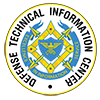Army Researchers Point to Early Warning Signs in Military Vehicle Structural ”Wellness”
Researchers from the U.S. Army Research Laboratory have shown that early fatigue damage behavior in structures may be predicted through the study of the microscale mechanical behavior of the material. The findings are an important result for the structural health monitoring (SHM) community and may lead to new sensing techniques for predicting the service life













